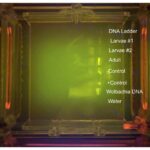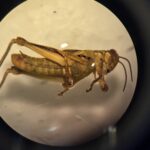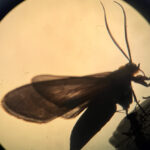Sample information |
|
| Picture |
|
|---|---|
| Location | |
| Collection date | 08/19/2020 |
| Captive / Cultivated? | Wild-caught |
| Group | St. John High School USD 350 |
| Observations | The larvae were found in sandy soil in their pits. There were a lot of other pits around. The adult was found in my backyard. |
| Putative identification | Arthropoda Insecta Neuroptera |
Methods |
|
| Extraction kit | DNeasy (Qiagen) |
| DNA extraction location | Abdomen |
| Single or Duplex PCR | |
| Gel electrophoresis system | MiniPCR |
| Buffer | TBE |
| DNA stain | GelGreen |
| Gel images |

|
| Protocol notes | I stored my arthropods in 90% ethanol for about two months prior to DNA extraction. DNA extraction: The DNA was extracted from the abdomen. All of the Dneasy (Qiagen) protocols were followed. The extraction took two days to complete. PCR: Mini One Taq polymerase was used. Gel Electrophoresis: All of the lanes worked except for the DNA ladder and the positive and negative controls. This may be due to a pipetting error. Importantly though my Wolbachia DNA worked.
|
Results |
|
| Wolbachia presence | No |
| Confidence level | High |
| Explanation of confidence level | The arthropods were not double banded and it was pretty clear that they didn’t match with the Wolbachia DNA. All of the protocols were followed exactly as well. |
| Wolbachia 16S sequence | |
| Arthropod COI sequence |
|
| Summary | The Neuroptera was found to be negative for Wolbachia. |
 Differential Grasshopper – Melanoplus differentialis
Differential Grasshopper – Melanoplus differentialis Pill Bug (Armadillidium vulgare) – Draft
Pill Bug (Armadillidium vulgare) – Draft Melanoplus Femurrubrum
Melanoplus Femurrubrum Grasshopper – Orthoptera
Grasshopper – Orthoptera Cisseps Fulvicollis
Cisseps Fulvicollis